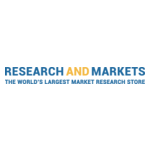DUBLIN–(BUSINESS WIRE)–The “Global External Urine Management Products Market Size, Share & Industry Trends Analysis Report By Distribution Channel (Offline and Online), By Product, By End- use (Hospitals, Clinics, Home Care Settings), By Regional Outlook and Forecast, 2022 – 2028” report has been added to ResearchAndMarkets.com’s offering.
The Global External Urine Management Products Market size is expected to reach $752.5 Million by 2028, rising at a market growth of 5.0% CAGR during the forecast period.
Transitioning from sanctifying grace catheters to autonomous continence is made possible by the cutting-edge external urine management device for anatomy. Fit, securement, and performance are the issues that must be addressed for urine incontinence to be properly managed.
According to the American Society of Nephrology, urologic illnesses are the third most prevalent problem affecting the elderly population and are responsible for roughly 47.0 percent of doctor visits. As a result, the market’s main development drivers are the high prevalence of UI, growing awareness campaigns by a variety of government and non-profit organizations, as well as and increased technology investment.
Advanced renal failure is primarily brought on by diabetes, followed by hypertension, which is thought to impact billions of people across the world. Thus, it is projected that an increase in the number of patients with end-stage renal illnesses is expected to increase demand for external urine management solutions, supporting market growth over the projection period. Additionally, efforts to raise awareness by various governmental and charity organizations are predicted to spur market expansion. For instance, the Continence Aids Payment Scheme was introduced by the Australian government (CAPS).
Incontinence care needs for chronic or severe incontinence patients are assisted by this program. In addition, they initiated the National Continence Management Program to increase public awareness of various bowel and bladder health problems. A variety of professional organizations have raised awareness of continence across all care settings, including urogynecology, urology, gynecology, nursing, and others.
Market Growth Factors
Urinary Incontinence Is More Common
The rising demand for urinary catheters around the world is mostly due to the high prevalence of urine incontinence. The elderly and residents of nursing homes have greater prevalence rates. Incontinence, which cannot be treated or controlled with drugs or surgery, is managed with urinary catheters. Given that obesity and an aging population are the two main risk factors for urine incontinence, it is anticipated that the incidence of urinary incontinence is expected to rise. They systematically examine and meta-analyze the understanding of the prevalence of urinary incontinence in older women around the world as well as the related and influential factors.
An Increasing Number Of Geriatric People
The rising elderly population is one of the biggest issues facing emerging nations worldwide. The incidence of chronic illnesses in the elderly, such as peripheral arterial disease, heart disease, and venous thromboembolism, is also anticipated to drive growth in the catheter market. The largest old population in the world, which is expanding at an unprecedented rate, is found in the Asia-Pacific region. The percentage of adults 60 and older in the population is rising, according to the World Health Organization (WHO). There were 1 billion people 60 and over in 2019, and by 2050, that figure is expected to increase to 1.4 billion.
Market Restraining Factors
Issues Related To The Use Of Catheters
Patients who have catheters in their bladders may have cramp-like contractions. The balloon is being forced out of the bladder, which hurts. Patients might require medicine to reduce the spasms’ frequency and intensity. Catheter leaking is another problem with indwelling catheters. This may occur as a result of feces or bladder spasms. Additionally, it’s critical to ensure that the catheter is draining, as leakage may be a sign of a blocked catheter. Blood or debris in the catheter tube can happen with an indwelling catheter as well. This may become a problem if the catheter drainage system gets clogged.
Scope of the Study
Market Segments Covered in the Report:
By Distribution Channel
- Offline
- Online
By Product
- Male External Catheters
- Female External Catheters
- Urine Collection Accessories
By End Use
- Hospitals
- Clinics
- Home Care Settings
- Others
By Geography
- North America
- US
- Canada
- Mexico
- Rest of North America
- Europe
- Germany
- UK
- France
- Russia
- Spain
- Italy
- Rest of Europe
- Asia Pacific
- China
- Japan
- India
- South Korea
- Singapore
- Australia
- Rest of Asia Pacific
- LAMEA
- Brazil
- Argentina
- UAE
- Saudi Arabia
- South Africa
- Nigeria
- Rest of LAMEA
Key Market Players
List of Companies Profiled in the Report:
- Becton, Dickinson and Company
- B. Braun Melsungen AG
- Sage Products LLC (Stryker Corporation)
- Teleflex, Inc.
- Cardinal Health, Inc.
- Consure Medical
- Hollister, Inc.
- Coloplast Group
- Tilla Care Ltd.
- Sterimed Group
Key Topics Covered:
Chapter 1. Market Scope & Methodology
Chapter 2. Market Overview
Chapter 3. Global External Urine Management Products Market by Distribution Channel
Chapter 4. Global External Urine Management Products Market by Product
Chapter 5. Global External Urine Management Products Market by End-use
Chapter 6. Global External Urine Management Products Market by Region
Chapter 7. Company Profiles
For more information about this report visit https://www.researchandmarkets.com/r/3h0n1s
Contacts
ResearchAndMarkets.com
Laura Wood, Senior Press Manager
[email protected]
For E.S.T. Office Hours Call 1-917-300-0470
For U.S./ CAN Toll Free Call 1-800-526-8630
For GMT Office Hours Call +353-1-416-8900







